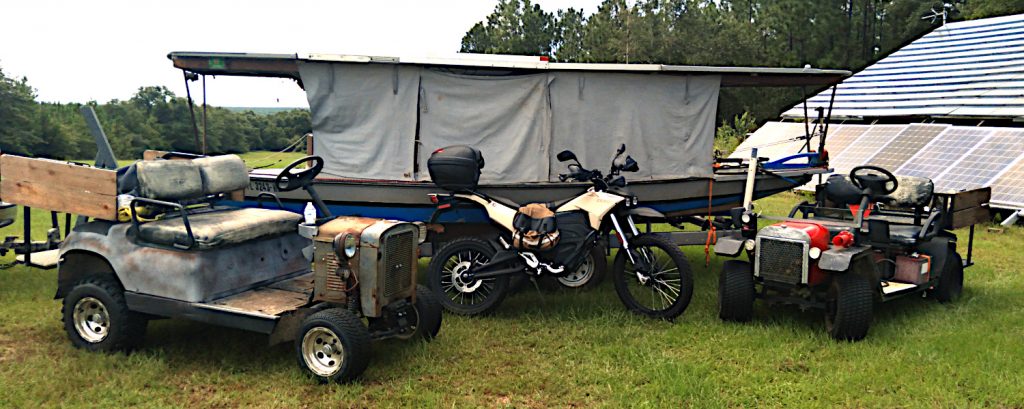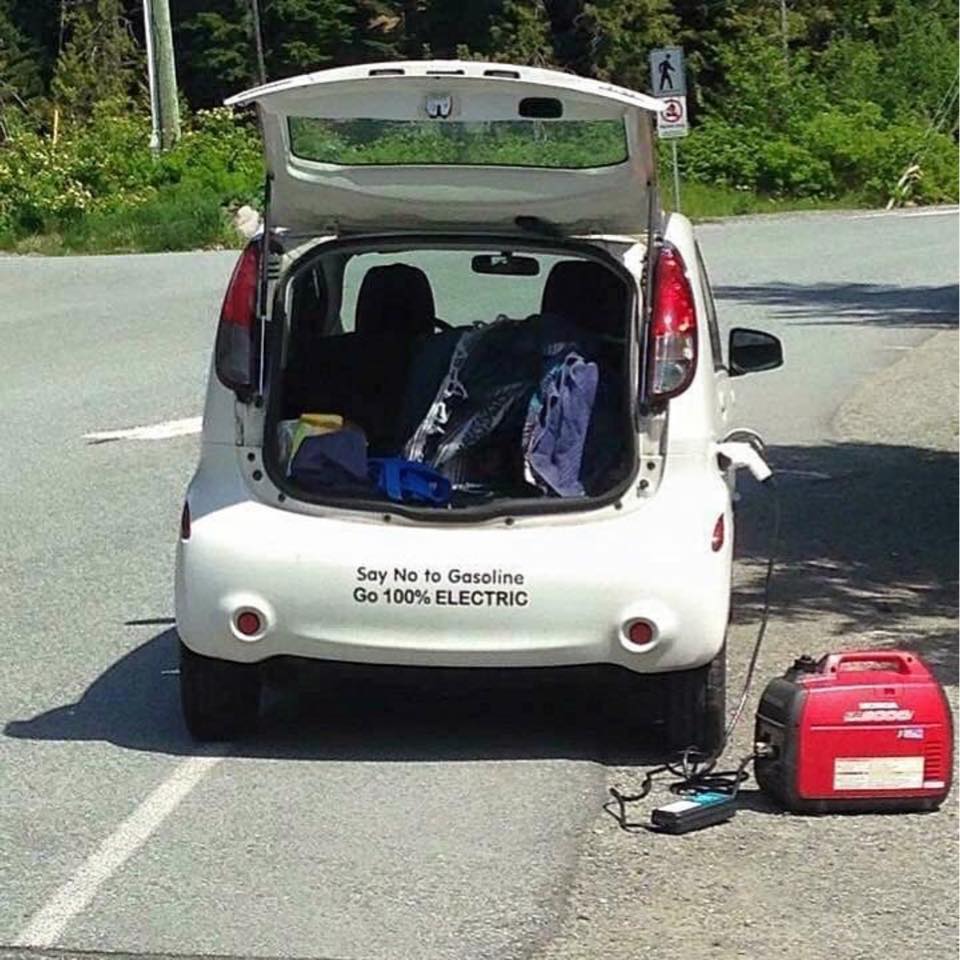Electric Vehicles (EVs) have been around over a century and have been very popular and practical in some areas. In other areas, not so much. They are perfect for forklifts, golf cars and neighborhood vehicles. Even delivery vehicles with a fixed, predictable route.
Electric automobiles were tried early on and their usefulness was limited. The same goes today, but they are becoming more practical. Good thing, because the government seems Hell bent on forcing everybody to get one.
There are a problems with everybody getting one. They can’t build them fast enough. There isn’t enough copper and rare earth materials for the motors. We don’t have enough lithium and cobalt for the batteries. Not everybody can afford one. Not everybody wants one. On the other hand, nobody wants to pay $4-5 a gallon, or more, for gas.
Hurry up and wait! Standard government procedure. We have the materials in this country, but the government won’t let the miners mine. There needs to be a coordinated effort to get this done if we are going to do it.
Then there is the other problem. How do we find enough electricity to charge the cars when many parts of the US and other countries can barely keep the lights on? They shut down the coal plants, knock down the hydroelectric dams and turn off the nukes. How’s that going to help? I guess we’ll just have to do it ourselves. I do.
I own 4 electric vehicles, with more on the way. No electric road cars, mind you. My most-used road vehicle only has 280,000 miles on it and it just got a new fan belt, so it’ll be a while before I need a new car. I figure if they get a Supercharger station at every Interstate rest area and Cracker Barrel restaurant, a 400 mile battery car will be ready for prime time. They exist, but they cost more than I am willing to pay.
In the meantime, my farm and recreational EV fleet is charged by solar…very carefully.

There are the two electric trucklets, proof that someone with idle time and a torch should not be left unsupervised. The gray one, is based on a Yamaha G19 golf car (not cart) and the other (red) is based on a Zone NEV. Previously I had full sized pickups for farm chores and these jalopies are actually better than the pickups. These have been fitted with a forklift plug. They can plug into a standard 48v charger, running from the main solar power system’s inverter, or they can plug directly into the solar power system’s battery stack. If not in use, the buggies can each contribute another 10kwh of storage to the system.
The ZERO electric motorcycle would be great in town. Out where I live, with a limited range of maybe 50 miles, I can go the 32 mile round trip to the bank or the barber. I guess that’s fine. It has to plug into AC from the solar power system.
Then there is Sun King, the electric launch. It is solar powered, so it pretty much takes care of itself. I have traveled thousands of miles in this boat! When stored in the shed, there are three panels outside and a dedicated charge controller to keep it fresh. Sun King can serve as a backup power source, with 7.5kwh battery and 5kw inverter aboard. Maybe I should charge the Zero with the launch!
The bike and the buggies are my main concern and there are special considerations with my present system capacity.
First, the plug-in golf car charger and the motorcycle both have something in common with your new Tesla’s 120v charge plug. They connect to a standard outlet and they pretty much suck out as much power as it can give. That means you can’t do much else with that circuit when a vehicle is charging. I have the motorcycle charger on a different circuit from the buggies so they can charge at the same time and only one charger for two buggies. I only have two 120 circuits in the shop, so forget using the air compressor or other big load.
Then there is the capacity of my solar source. Because the motorcycle never completely turns off, I leave it plugged in all the time. However, I have it on a timer, plain old appliance timer, so that it charges only during the day when there is usually plenty of power. But there are cloudy days and, for some reason, that’s when the wife likes to run the clothes dryer. You get the central air, Man Cave a/c and the clothes dryer going on a cloudy day and you may not get the battery bank topped up if charging buggies. So I charge buggies when the sun is out and the dryer is idle.
Another buggy and an electric aircraft are in the works, as is a solar-powered yacht. The yacht project has languished, but when the airplane is finally delivered it will need to be charged. My plan is to park the yacht next to the hangar and get started on the yacht’s power plant. Two birds with one stone. Shared resources. I can’t use both of them at the same time, ya know.
Now what if I broke down and bought an EV or PHEV (Plug-in Hybrid)? Yeah, I’ve thought about that. For MY driving, I’d use the 120v cord. For near errands I would just as soon go on the ebike or the big Honda. My wife, on the other hand, is a goer, but there is a good chance she could get by with the 120 cord. The power rate of the 120 cord would not require major system upgrades, though a few extra panels to help out on cloudy days would be desirable.
If I were still working, I’d have a commute of around 100 miles, daily. I think now we are talking PHEV or going to a faster 240v charger. That’s where it gets tricky, because all of this power is coming from solar panels, batteries and inverters. Either that or there’d be a heckuva power bill.
First, I’d need more power source. As it happens, I am in talks with John Kimball about getting another pallet of solar panels. Batteries? As long as I could charge in the daytime I’d be okay, but most people work day jobs! The extra panels could be arranged to maximize early morning and late afternoon charging and, if I had a 400 mile car it would work out, at least in the summer. In winter, a trip to the Supercharger station might be needed once or twice per week.
Then there is the matter of inverter capacity. As it happens, I have a backup inverter that could supply the 50 amps of 240v to a fast charger. The fast charger would use more power than the house! What does an extra 10-12kw inverter cost? It adds up.

So, yes, I am using solar for vehicle charging and making expansions for the future. As far as a new car goes, I think I will opt for a PHEV. It may be the best of both worlds. A Ford Escape (ugly little car), for example, could make it to Walmart without the engine starting. It would run the engine most of the way home. A trip to the bank or barber would run 100% on sunshine.
–NC
